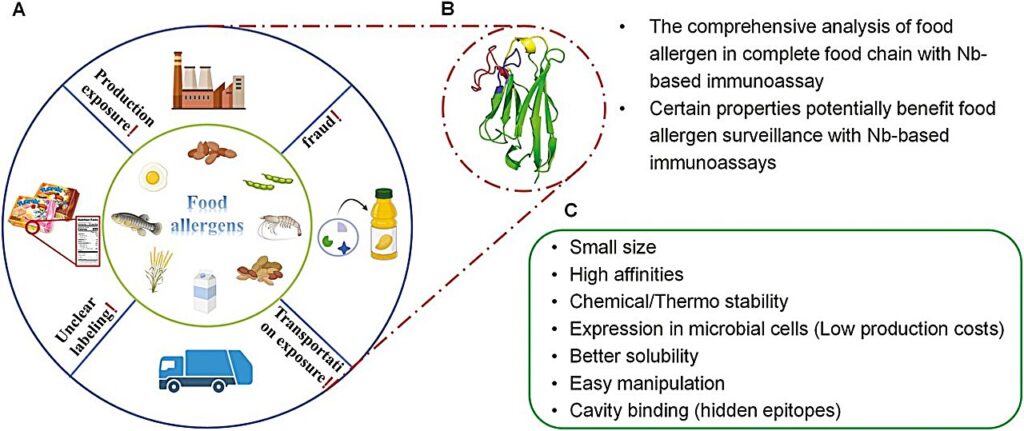Food allergies pose significant health risks, affecting millions worldwide, with the prevalence rising over the past decades. Traditional detection methods, such as monoclonal and polyclonal antibodies, are often costly, labor-intensive, and prone to cross-reactions. The need for accurate, efficient, and cost-effective allergen detection methods is more pressing than ever.
Due to these challenges, there is a growing interest in exploring new detection strategies. It is essential to conduct in-depth research to develop advanced detection techniques that can better safeguard public health.
Researchers from Tianjin Key Laboratory of Food Science and Health, Nankai University, China have made significant strides in this field. Their review, published on March 28, 2024, in the journal Food Quality and Safety, introduces the use of nanobodies for food allergen surveillance, potentially revolutionizing the way we detect and manage food allergies.
The study highlights the advantages of nanobodies over traditional antibodies in food allergen detection. Derived from camelid heavy-chain antibodies, nanobodies are small, stable, and highly specific, making them ideal for robust immunoassays. They minimize cross-reactions and effectively detect allergens like macadamia, peanut, lupin, and milk proteins.
A key highlight is their ability to target conformational epitopes, offering higher precision in allergen detection, especially in complex food matrices. The research also demonstrates the versatility and efficiency of nanobodies in various detection methods, such as Enzyme-Linked Immunosorbent Assay (ELISA) and electrochemical immunoassays, showcasing their broad applicability.
Prof. Dr. Shuo Wang, the senior author of this research, stated, “The development of nanobody-based immunoassays marks a significant advancement in food allergen detection. Nanobodies offer unparalleled stability and specificity, addressing the critical need for more accurate and efficient methods to protect sensitive individuals from food allergens. This research paves the way for future innovations in food safety.”
The research implications are significant. Nanobody-based detection methods could revolutionize food allergen surveillance, offering reliable, cost-effective solutions, enhancing food safety, and reducing allergic risks. Additionally, this study opens new avenues for developing therapeutic strategies and diagnostic tools, highlighting nanobodies’ versatility in biomedical applications.


